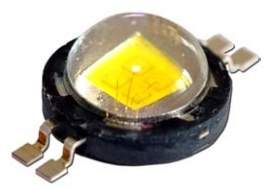Most jurisdictions throughout the world require cyclists to have their bikes equipped with head-
and taillights should they want to ryde at night. But the quality of those lights is often poorly
specified - all that is commonly required is that they be "appropriate for traffic use".
Types of bicycle headlights
As most night ryders know, bicycle headlights vary in quality and strength dramatically.
Cheaper ones use miniature incandescent light bulbs being barely sufficient to make
a cyclist visible to nearby vehicle drivers if street lighting is not too strong. In contrast,
luminous output of top shelf lights utilysing metal halide arch bulbs can easily be compared
to the output of regular car headlights while their huge rechargeable accumulators stand
hours of continuous operation. Having in mind enormous difference in prise of various
headlight models, each cyclist should ask themselves: "What is the adequate choice for me?".
Fortunately, electronics technology has recently witnessed a really amazing breakthrough.
After existing only in entusiastic engineers' dreams for decades, high power white LEDs have
finally come to reality. But now you wonder, why is every electronic freak so happy about yet
another type of light bulbs...

Well, LEDs are definitely not jet another light source. First of all, they are not bulbs
at all and they are the first artificial source of regular white light of that kind.
In LED, light is produced due to quantum mechanical effects inside a very special artificial
crystal. There is no wire filament there and there is certainly no electrical arching.
That is why we label LEDs
solid state light sources. Simply put, LED chip is a
precious stone that glows when electricity flows through it.
And they really rock! In terms of efficacy of converting electrical power into light, LEDs have
in last few years surpassed virtyally all traditional light sources, except very expensive
high pressure metal halide arch bulbs and rather bulky low pressure sodium arch lamps.
But both of those are not a particularly smart choice for most applications anyway, and
particularly not for hard working portable devices such as bicycle lights. What's more,
LEDs get better literally year after year.
Compared to more than a century old incandescent bulbs with wire filaments inside, LEDs are as jet
airplanes are to sailboats - difference in power output and reliability is just that hard
to compare. But that's not all - that whole power is controlled by a touch of a finger.
Compared to arch bulbs such as metal halide based ones, LEDs are as MP3 players are to
victorian music boxes - instead of requiring a skilled craftsmen to put them together,
they are practically printed out on a massive scale. And you do not need to take great
care not to shake or stir them or drop them onto a floor. No matter how roughly one
uses them, both LEDs and MP3 players persistently spill out tons of high fidelity music :)
So, if one wants an answer regarding the type of bicycle headlight to use from both an engineer
and an experienced cyclist point of view, the answer is very simple: use the one with LEDs.
This article describes a construction of a so called "driver circuit" that can be used to
supply energy to high power LED headlights, but also to high power LED torches or similar
light sources with LEDs. The circuit is physically small, it is cheap and realtively simple
to build but it is also very reliable. It can take various types of batteries as power supply
sources. This circuit takes great care not simply to use every bit of energy available and to
put it into an LED, but as well to suit all needs of the LED so that it will be able to shine
beautifully for decades.

 Well, LEDs are definitely not jet another light source. First of all, they are not bulbs
at all and they are the first artificial source of regular white light of that kind.
In LED, light is produced due to quantum mechanical effects inside a very special artificial
crystal. There is no wire filament there and there is certainly no electrical arching.
That is why we label LEDs solid state light sources. Simply put, LED chip is a
precious stone that glows when electricity flows through it.
Well, LEDs are definitely not jet another light source. First of all, they are not bulbs
at all and they are the first artificial source of regular white light of that kind.
In LED, light is produced due to quantum mechanical effects inside a very special artificial
crystal. There is no wire filament there and there is certainly no electrical arching.
That is why we label LEDs solid state light sources. Simply put, LED chip is a
precious stone that glows when electricity flows through it.